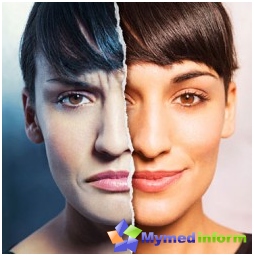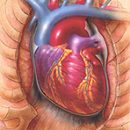The disease process has an allergic origin - an acute bullous reaction propagates into the mouth, on the mucosa of the organs of vision and urinary organs. At the same time, pathology is of extremely severe form of development and flow.
Information about the submission was published in 1922. After some time, the diseases assigned the names of scientists who were the first to identify it. More than Stevens-Johnson syndrome is known as malignant exudative erythema. The main clinical sign of this skin pathology is considered the formation of well-distinguishable water swirling on the patient's skin and mucous membranes.
If we talk about the age framework, then the Stevens-Johnson syndrome is not at all elected in this regard: the disease has a property to strike any age. The peak of morbidity is noted among the workable population of 20 to 40 years, and only single cases are registered in children in the first 3 years. Average by 1 million. A person accounts for 2-6 sick per year. As practice shows, Stevens-Johnson syndrome is more susceptible to men.
Causes of the disease
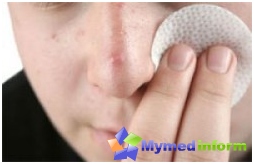
The basis of the syndrome is the allergic reaction of immediate type. Among the factors that can be a prerequisite for the development of the disease, they allocate the following:
- agents of infectious origin;
- medication;
- diseases of malignant nature;
- Unknown reasons.
In children, Stevens-Johnson's syndrome becomes a consequence of such viral infections as simple herpes, measles, piggy, Windmill, adenoviral infection. Among bacterial provoking factors celebrate tuberculosis, Salmonellosis, Tularevia and Gonorona, Among fungal - trico, histopathy and deep mixture.
The most common cause of the rapid development of syndrome in adult patients is the introduction of medicines or the development of a malignant tumor. Among the medicines, antibacterial drugs, non-steroidal anti-inflammatory agents, sulfonamides and CNS regulators have a special danger in terms of the appearance of severe allergies. The likelihood of the development of Stevens-Johnson syndrome increases if the patient was diagnosed with lymphoma or carcinoma.
If the disease did not succeed before the original source, and the factor caused by pathology was not determined, the disease is called the ideopotic (having an unexplained reason).
Clinical picture of the disease
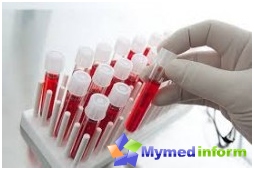
To confirm or denial the diagnosis to turn to a dermatologist. First of all, the specialist will appreciate the symptom syndrome characteristic of this patient, will then ask the patient in detail to establish a factor that caused the development of pathology.
In order to confirm the diagnosis «Stevens-Johnson Syndrome», Enjoy special diagnostic methods:
- Skin biopsy. As a result of histological analysis, the patient detects the motion of epidermis cells, subepidermal appearance of blisters and set lymphocytic infiltration.
- Clinical blood test. The data obtained allow to establish the presence of signs of the inflammatory reaction, the coagulogram procedure confirms the blood coagulation disorder, and as a result Biochemical analysis of blood It becomes an explicit low protein concentration. Specialist will pay a specialist for the data of the immunological study of blood, which, in the presence of Stevens-Johnson syndrome, will certainly show a sharp jump up the number of T cells and specific antigens.
If, after the studies conducted, the doctor will still experience doubts about the validity of the diagnosis, the patient will be subject to additional analyzes, among which it is possible to distinguish a coprogram, biochemical analysis of urine, ultrasound examination of the kidneys and bladder, Zimnitski, X-ray study of the lungs. Sometimes other narrow specialization doctors are attracted to the diagnostic study - urologist, nephrologist, ophthalmologist, otolaryngologist and pulmonologist.
Treatment of the disease
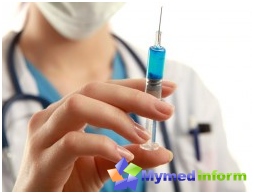
Our site notes that the treatment of Stevens-Johnson syndrome is usually positive. Under the influence of adequate complex therapy, the intensity of heavy symptoms usually goes to a decline in 8-10 days after the start of treatment. After a while, the body temperature comes to normal, and the inflammation goes from the skin and mucous membranes.
As a rule, a significant improvement in the state of the patient or his full recovery occurs approximately after 1 month. Despite the severity of the disease, the manifestations of the skin syndrome appear by alternating attacks: they decrease, then they are inflamed again. This happens within 2-3 weeks of responsible treatment. After the final recovery about Stevens-Johnson syndrome, a person will still remind the specks of alopecia (places devoid of hairs) on eyebrows and eyelashes. As it was already noted, the forecast cannot be called favorable if the course of the underlying disease in the patient is complicated by a leek corneal of the eye, blindness or the appearance of a synech.
The basis of the treatment of Stevens-Johnson syndrome is high doses of hormonal glucocorticoids. Since the patient's mouth is often strongly amazed by blisters, the introduction of medicines is made using injections. Gradually doses of drugs reduce, it happens immediately after visible improvement in the well-being of the victim.
To clear the blood from the toxic immune complexes that appear with the development of the syndrome, the patient is subjected to cascade filtering of plasma, hemosorption, immunosorption and membrane plasmapheresis.
An important meaning for the recovery of a person has abundant drinking regime and normalization of daily diurea. For general strengthening of the body, polyvitamin drugs are prescribed with a mandatory presence of elevated doses of calcium and potassium. Prevention of secondary infection is carried out by applying local and systemic Antibiotics.





